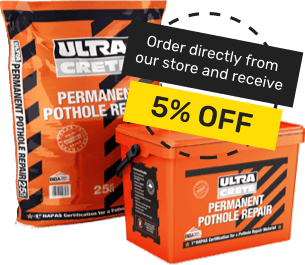Introduction
Block paving is increasingly being used in town centres, providing a resilient and attractive alternative to traditional surfaces such as tarmac. The visual appeal however comes at a cost. Road markings on block paving are known to be more difficult to apply and have a substantially shorter lifetime than on bituminous surfaces. This means more frequent remarking, and consequently higher maintenance costs and greater inconvenience to road users.
Working in partnership with Meon UK, Hi-Way Services Ltd announces a new technique for block paving marking which simplifies the application and delivers better, more long lasting results.
The Problem
Block paving has traditionally been marked using thermoplastic applied manually. The molten thermoplastic is poured into a mould which is dragged along the paving leaving a line.
This approach had two drawbacks:
- Speed – it is a slow process which means jobs took a long time and created more inconvenience for road users.
- Short lifetime – thermoplastic is specifically designed for use on bituminous surfaces. To work well the surface has to be dry before application. Block paving is more porous and more difficult to dry to ensure proper adhesion of the thermoplastic. Consequently, the thermoplastic tends to have a shorter life time than on tarmac and needs more frequent replacement.
A better approach is to use MMA. This is the material used for high friction/anti-skid surfacing and road markings and it has far superior adhesion properties on block paving.
However, application of MMA also has some issues.
The MMA is a polymer which is created by mixing a resin with a catalyst, a bit like epoxy adhesive. To create the MMA the resin must be mixed with the catalyst and quickly applied to the paving service before it hardens.
To provide the optimal work-time and perfect properties of the resulting MMA the proportions of the resin and catalyst have to be carefully controlled.
Traditionally MMA road markings have been applied to block paving in one of two ways:
- Hand applied – the resin and catalyst are mixed in their containers via a power mixing tool, the mixture poured into a mould and dragged across the surface leaving a line. The process is slow and not suitable for long lengths of marking. Only a certain amount of the MMA can be mixed at a time or it will harden before it can be applied. If this method is used to do a large amount of marking the results are often not uniform and look very untidy.
- Machine applied – the resin and the catalyst are sprayed onto the road surface from a machine. Although potentially quicker and more flexible than hand application there are problems with this technique. The resin and catalyst are both liquids with different viscosities. Maintaining the correct pressure through the pumps in the machine to create exactly the right mixture can be very difficult. There is also the possibility of MMA hardening in and around the nozzle causing blockages and therefore delays whilst the machine is cleaned. The result is that there are frequent delays in the marking process and the resulting MMA may not be optimal quality leading again to more frequent remarking.
The Solution
Hi-Way Services has been working with Meon UK to create a better solution for marking block paving by eliminating the application problems. Together they came up with a novel solution which significantly improves results. Their approach is to use reflective beads as a carrier for the catalyst. Reflective beads are always applied onto road markings during the laying process to improve night-time visibility of the road markings.
In their new approach the MMA line is sprayed onto the road surface as normal but the catalyst is applied via the surface of the reflective beads which are sprayed onto the line via the machine in a much more controllable way.
“We have known for some time that markings on block paving didn’t last as long as we or our clients would like.” Said Danny O’Reilly of Hi-Way Services Ltd. “We knew there must be a better way of approaching the problem and challenged Meon UK to come up with some ideas that together we could work on.”
Chris Reynolds of Meon UK said “All the component parts of the solution were available but no one had thought to put them together in the right way. Hat’s off to Danny for pushing us to tackle the problem.”
The Results
The new approach was first used in a town centre site in Ashford in Kent.
An adapted Graco Line Laser5 marking machine was used to apply the MMA markings, the machine also applied the catalyst coated glass bead in one pass. The Graco machine also has twin guns allowing double yellow lines to be installed in one pass improving uniformity.
The project was completed much quicker than with other techniques and long line lengths were completed in a single pass leaving a very clean line.
The lifespan of markings using the new approach is expected to be 5 years plus. A significant improvement on traditional approaches.
